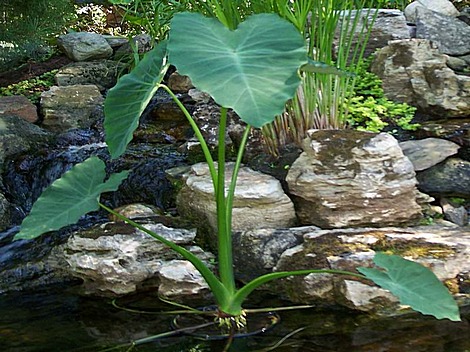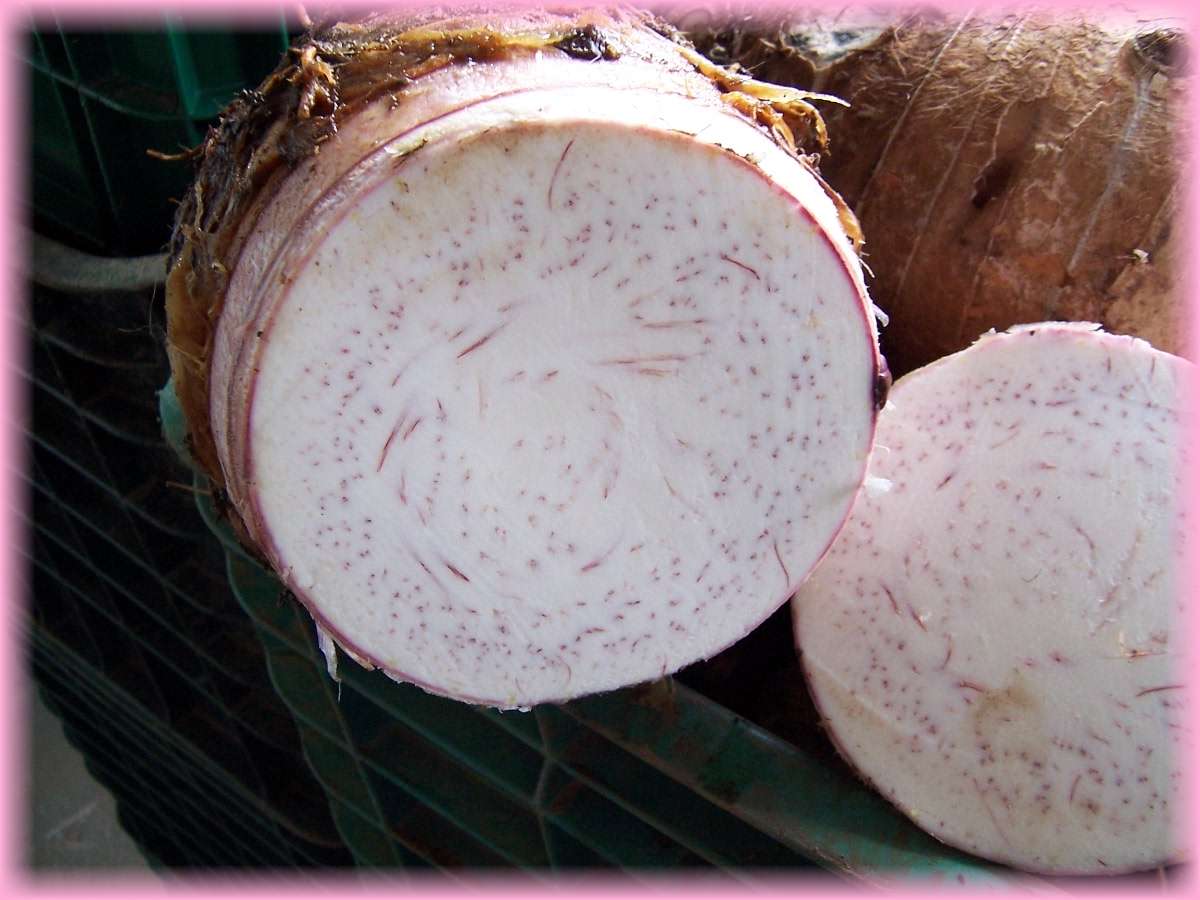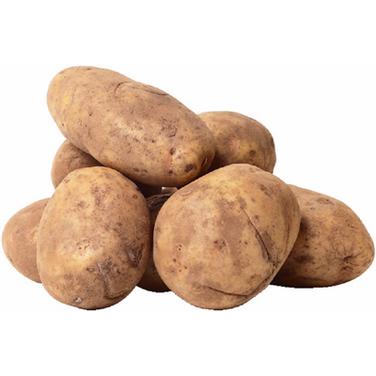 TARO
TARO
HOME | CHARACTERISTICS | TARO AROUND THE WORLD | REFERENCES
CHARACTERISTICS
Characteristics
Taro leaves are rich in minerals and vitamins, making them a good source of riboflavin, phosphorus, thiamin, zinc, and iron, and vitamin C, vitamin B6, copper, niacin, manganese, and potassium. Taro corms are also very high in starch, and a good source for dietary fiber.
Taro contains tiny starch grains rich in amylose, which is excellent for people that have digestive problems. That is why Taro flour is used in canned baby foods and baby formulae. It is also good for people that have allergies, for example: lactose intolerance. Some people say that Taro creates less dental problems than other starch crops. In addition, there has been recent research that indicates that biodegradable plastics can be produced by adding starch grains from Taro.

Toxicity
The raw corm of a Taro plant, and also the leaves, is toxic unless boiled to remove the calcium oxalate within the corm. It can also be removed by steeping the roots in cold water overnight.
One can eat Taro with milk or other calcium rich foods as a way of avoiding some of the risks of the oxalate ion.
The calcium oxalate that occurs through the plant can become lodged in the mucous membranes of the throat and mouth unless treated properly. Intense burning or itching usually occurs, this is a result of the calcium oxalate injecting the toxins into the mucous membranes through their sharp-tipped crystals.
Like Potato, Like Taro...
The Taro plant is very much like that Potato, which is why it is sometimes nicknamed “Potato of the Humid Tropics.”
Taro has a higher quantity of calcium, phosphorus, and protein than the Potato and is rich in vitamin A and vitamin C. In addition, Taro is 98.8% digestible due to its extremely tiny starch grains that are rich in amylose, which, with human saliva, breaks down to sugar.
 Taro vs. Potato
Taro vs. Potato 